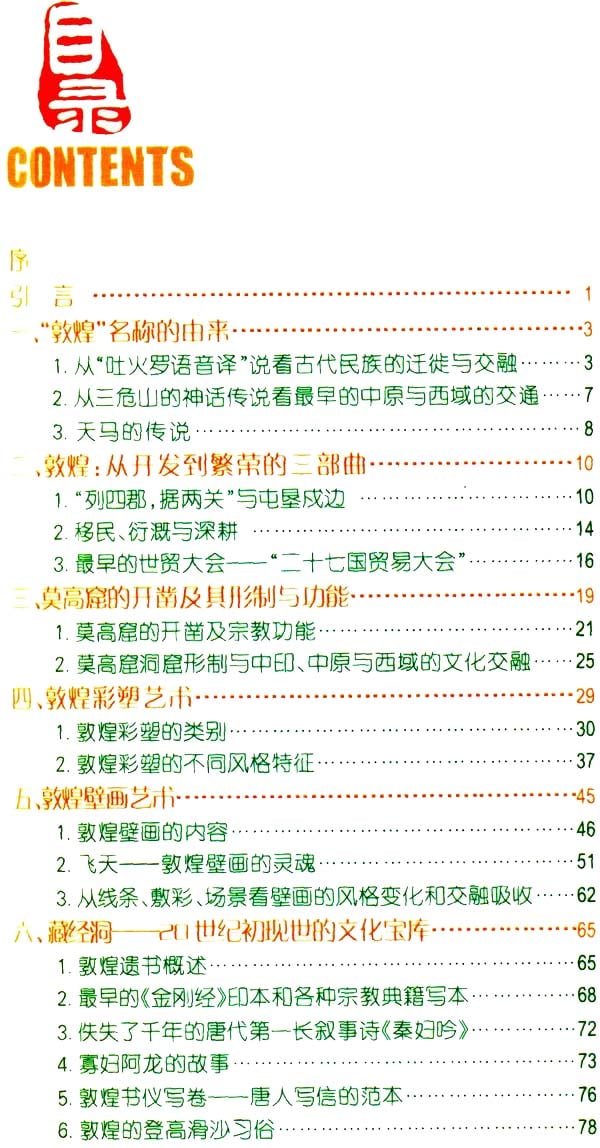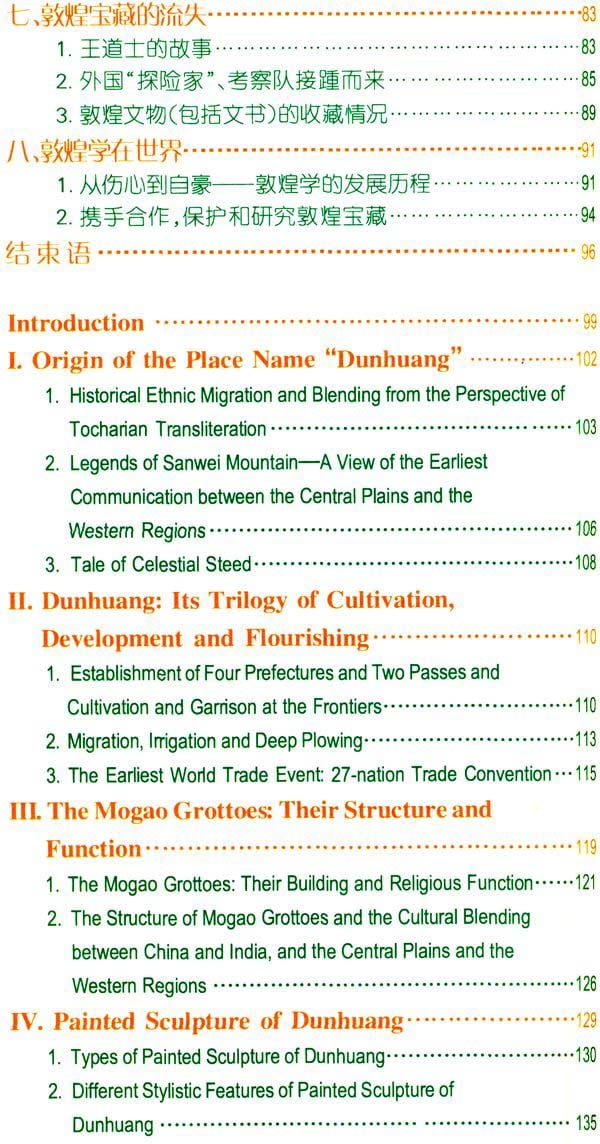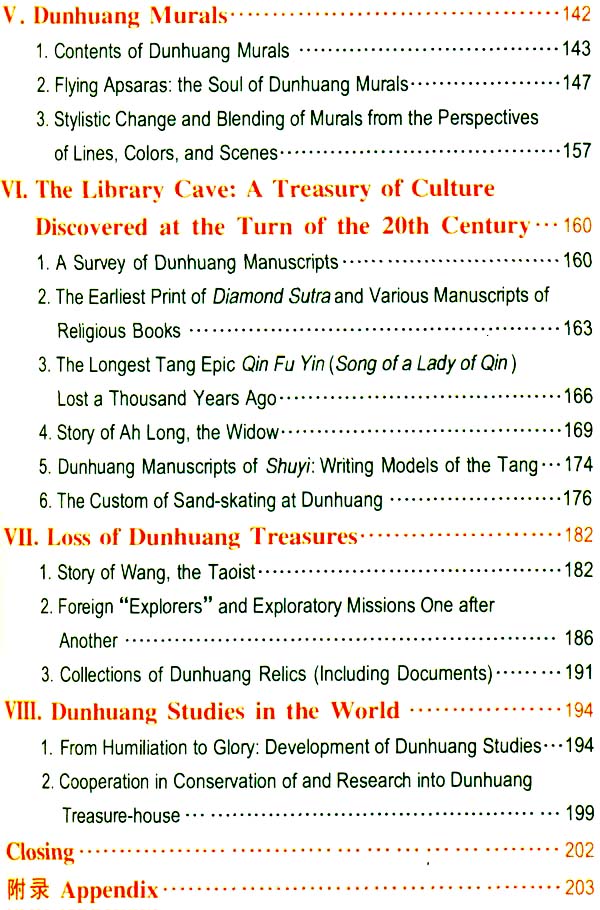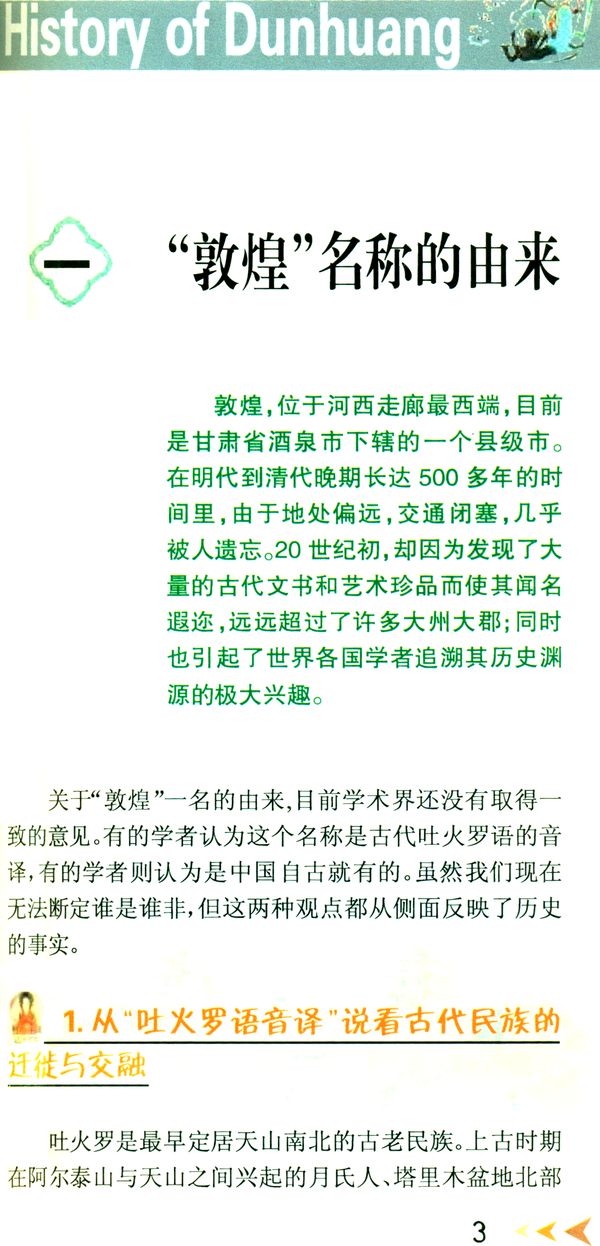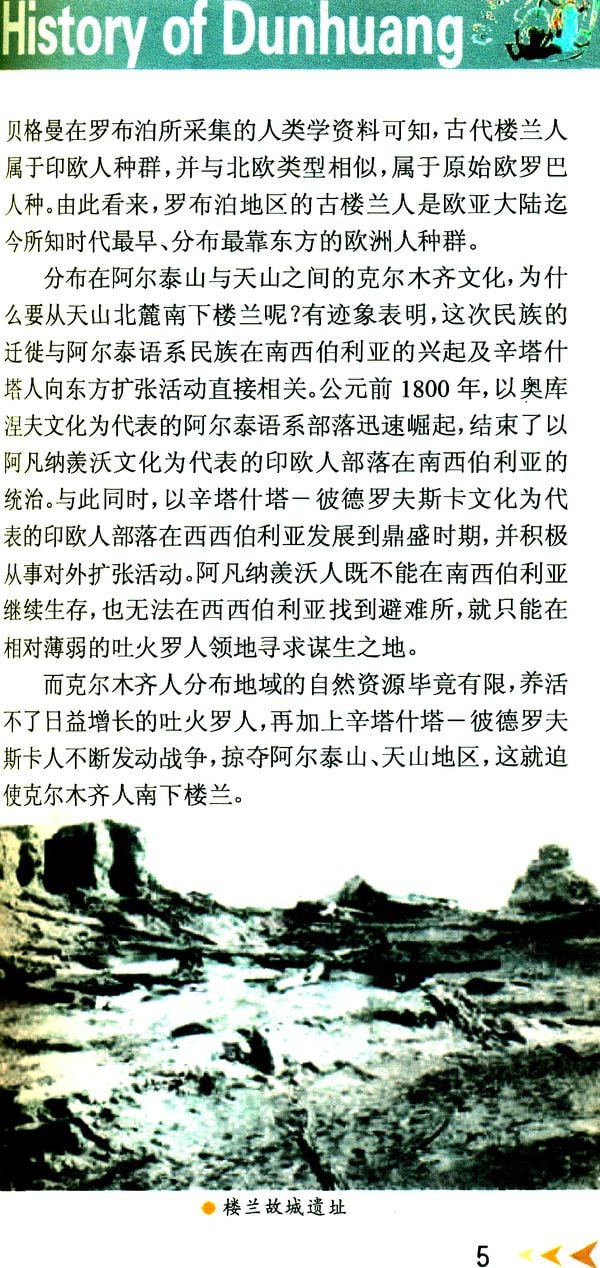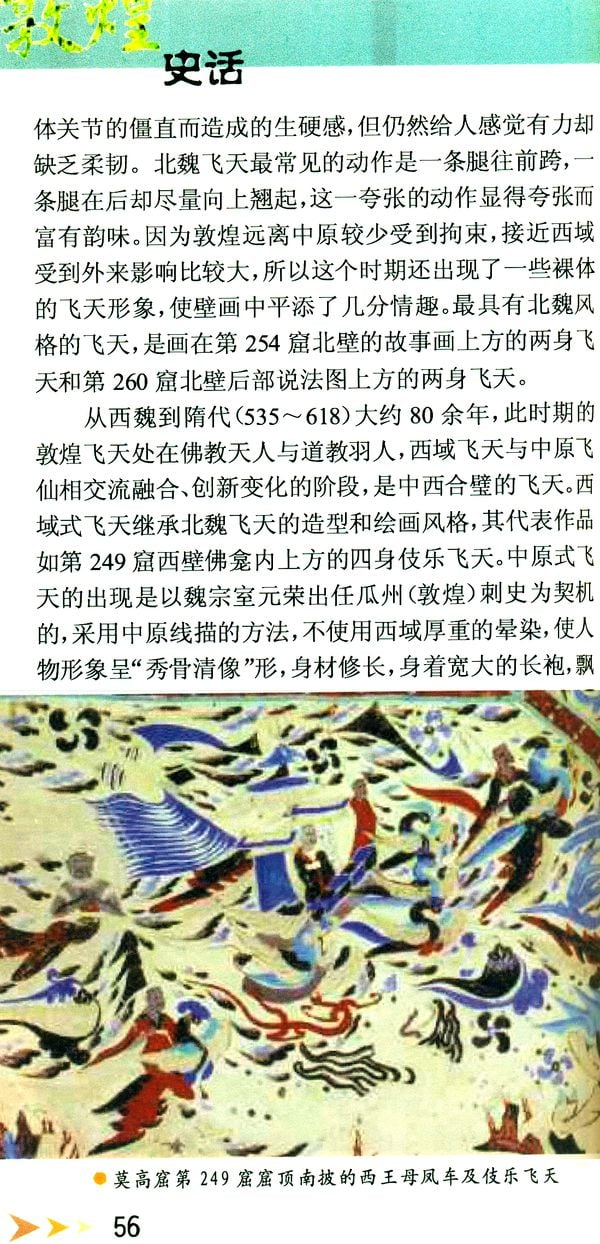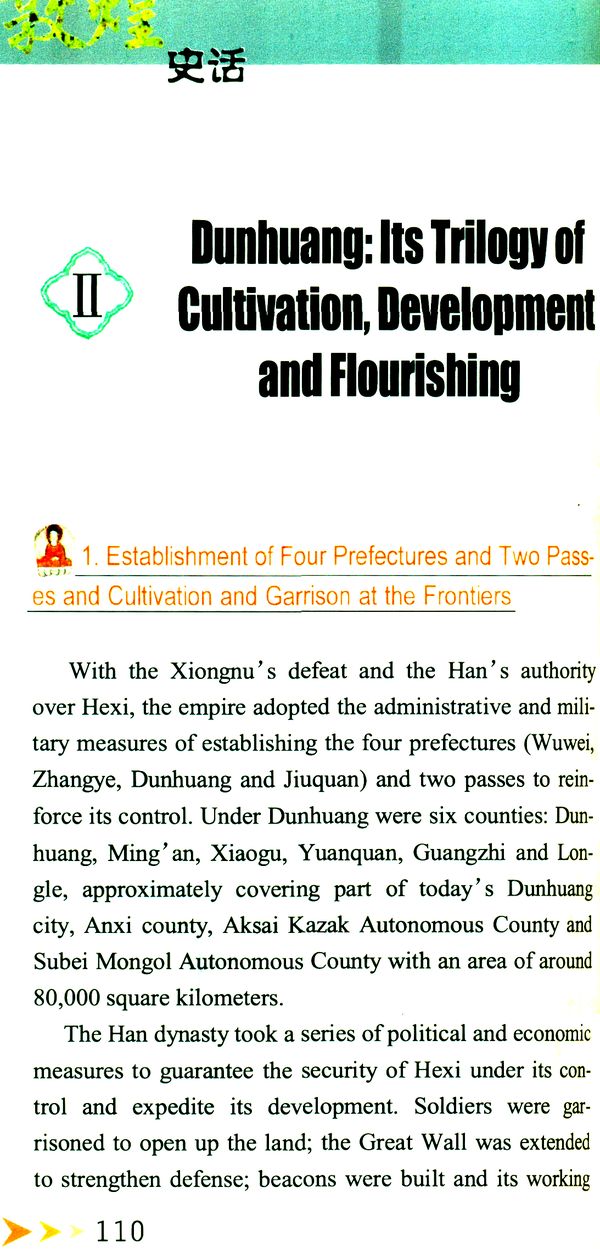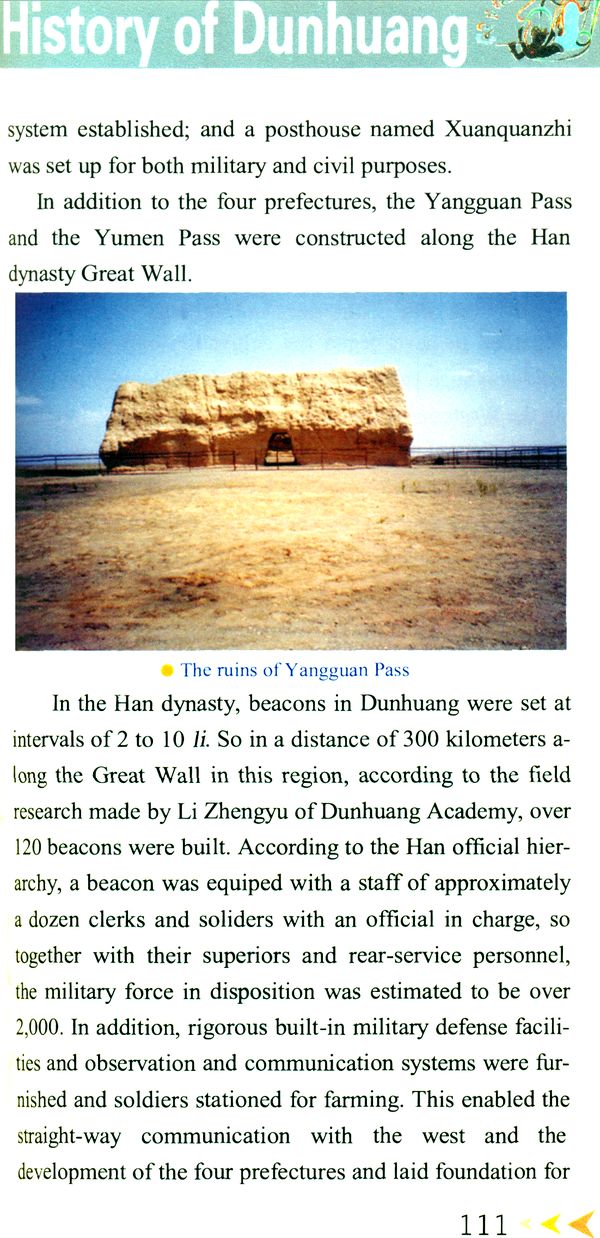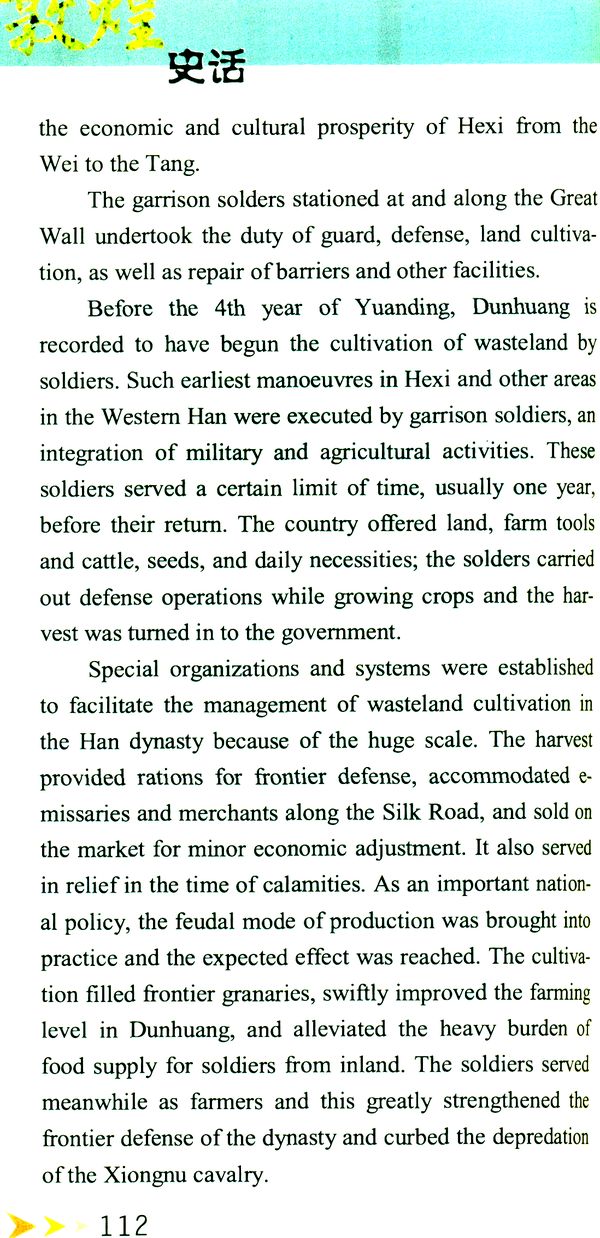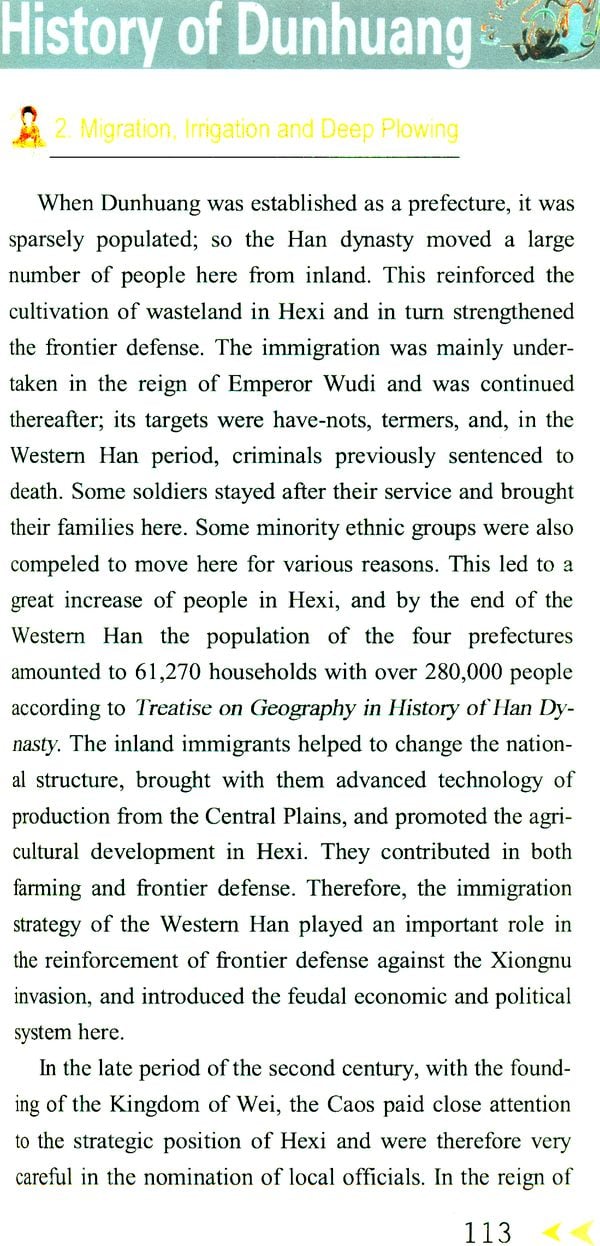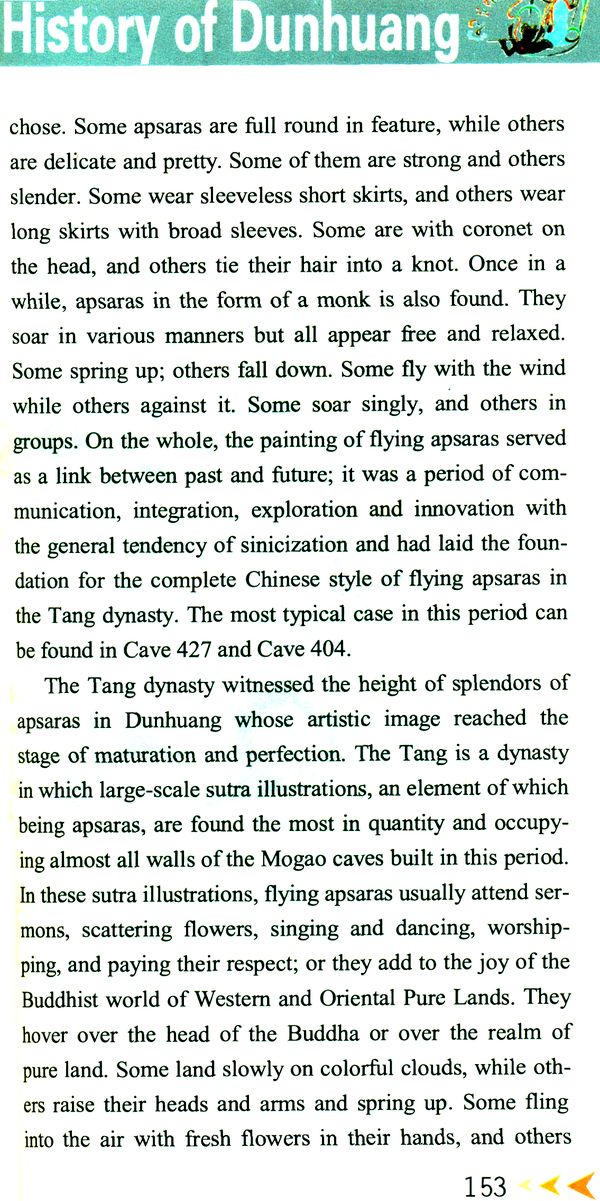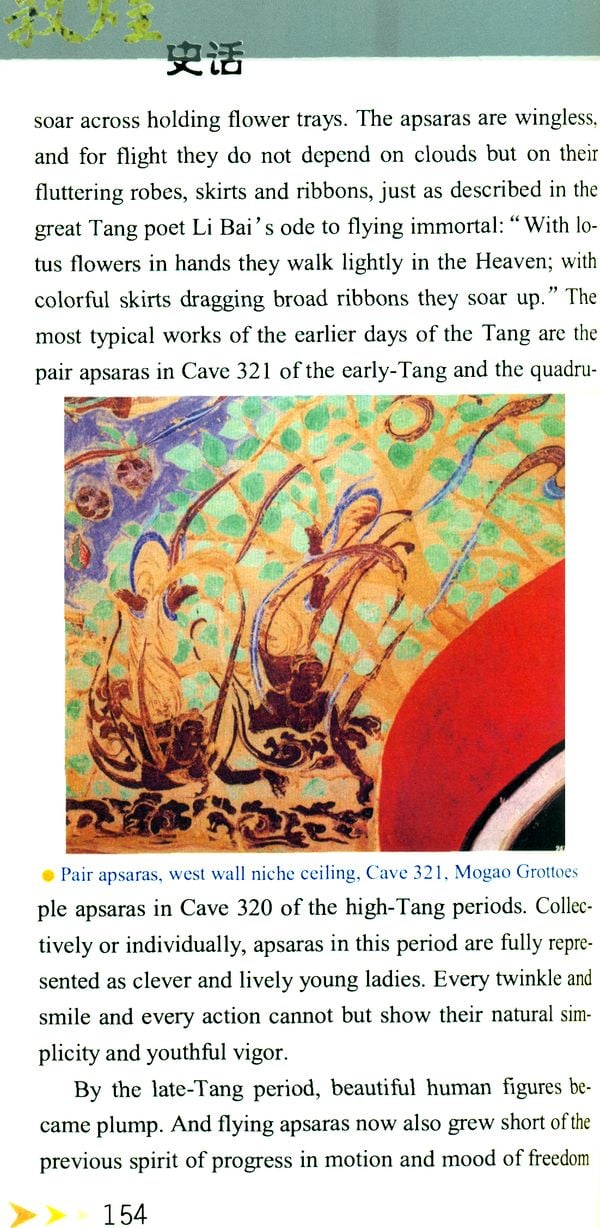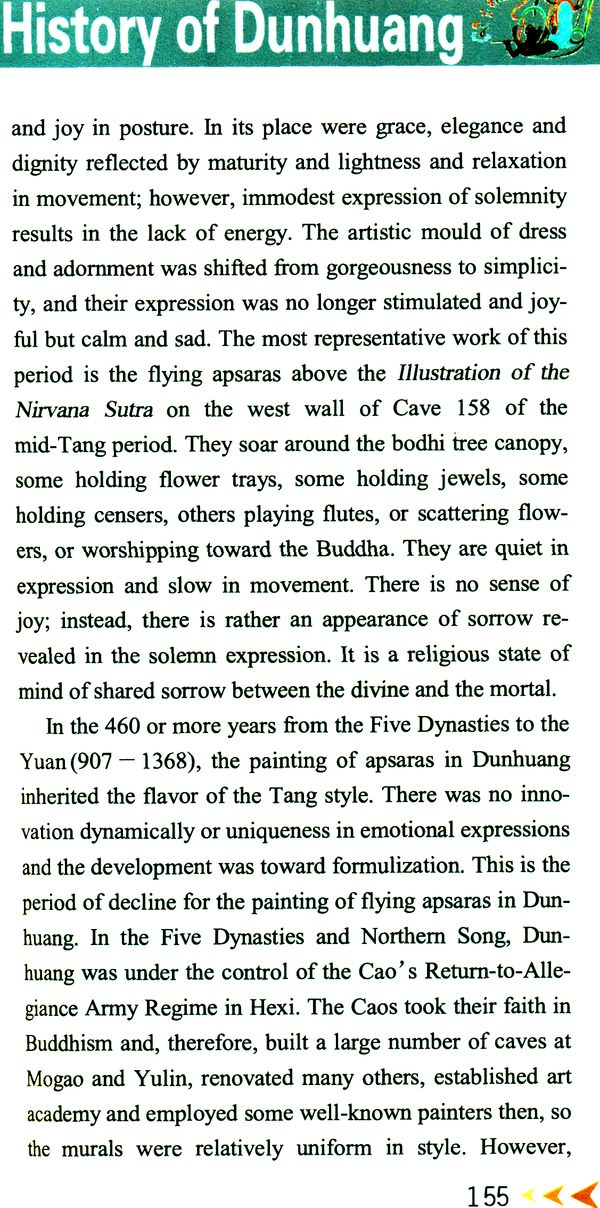
History of Dunhuang
Book Specification
| Item Code: | NAN456 |
| Publisher: | Nepal Tianli Publication and Culture Company Pvt. Ltd. |
| Language: | Chinese Text with English Translation |
| Edition: | 2016 |
| ISBN: | 9789937907941 |
| Pages: | 216 (Throughout Color Illustration) |
| Cover: | Paperback |
| Other Details | 8.0 inch X 4.5 inch |
| Weight | 270 gm |
Book Description
Dunhuang is a county-level city at the westernmost of the Hexi Corridor in Gansu. It is an oasis bracketed by the Gobi desert, deposited by the flood of ancient Dizhi River (present Danghe River) and sandwiched by Northern and Southern Mountains (alias Mt. Mazong and Mt. Qillan). Surrounding the oasis are mostly the Gobi and desert.
The geographical location of Dunhuang was very important, connecting the Central Plains in the east, bordering Xinjiang in the west; and it served since the era of Emperor Wudi (reign 140BC-87BC) of the Han dynasty as a key point of communication and military affairs. Starting from Dunhuang, eastward through the Hexi Corridor, it was the ancient capitals of Chang’ and Luoyang. Reaching westward by the Yangguan pass along the northern foot of Kunlun Mountains, the route would lead to Shanshan (Charklik), Qiemo (Charchan), Yutian (Khotan), Shache (Yarkand), and enter the territory of Yuezhi (Indoscythae) and Anxi (Bokahara) after climbing over Congling (Pamirs). This is the southern branch of the world-known ancient Silk Road. The northern branch went through the Yumen Pass along the southern foot of Tianshan Mountains via Cheshiqian Wangting (Turfan), Yanqi (Karashahr), Qiuci (kucha), Shule (Kashgar), and went over Congling (Parmirs) before entering the area of Dayuan (Farghana), Kangiu (Sogdiana), Daxia (Bactriane). In the Sui and Tang period (581-907) when the economic and cultural exchange between China and the West was reinforced, another route was opened further north via Yiwu (Hami) along Pulei (Balikun) and Tiele tribal area across the Chuhe River and Syr Darya to the Western Sea (Mediterranean Sea), or along the northern foot of Tianshan Mountains in the direction of the Central Asia.
Dunhuang exercised its control over the Yang-guan and Yumen passes, through which it controlled merchants and travelers both eastward and westward. Dunhuang was the both eastward. Dunhuang was the “throat” of the ancient Silk Road. The triple routes that led to the Cebtral Asia and Europe via Yiwa, Gaochang (Qo-co), and Shanshan all started here. This clearly demonstrates the important position and key role Dunhuang played in the communication between central China and the West.
As the “throat” of the ancient Silk Road, Dunhuang served as the center and relay station of trade between east and west, and was therefore called “cosmopolitan city”. Here, foreign merchants from all over the Western Regions and the Han merchants from the Central Plains had their dealings of silk and china from the Central Plains, camels and horses from the north, jewelry from the Western Region, as well as foodstuff.
Since the opening of the Silk Road in the Han dynasty, the culture of the Central Plains spread to Dunhuang, took its root here and germinated. Meanwhile, since it bordered on the Western Regions and enjoyed convenience in traffic, Dunhuang accepted in the early period the Buddhist culture originated from India. The Indian Buddhist culture carried along in its eastward journey the Western and Central Asian Cultures, so that different cultures met, collided, and blended here. As is pointed out by Professor Ji Xianlin, president of China Dunhuang and Turfan Society, “There are four unique culture systems with the longest history, widest: China, India, Greece, and Islam. There is not a fifth one. All the four cultural systems shared one place of confluence: Dunhuang and Xinjiang in China. There was not a second location.” This fully illustrates the important position of Dunhuang in the cultural communication between China and the West.
